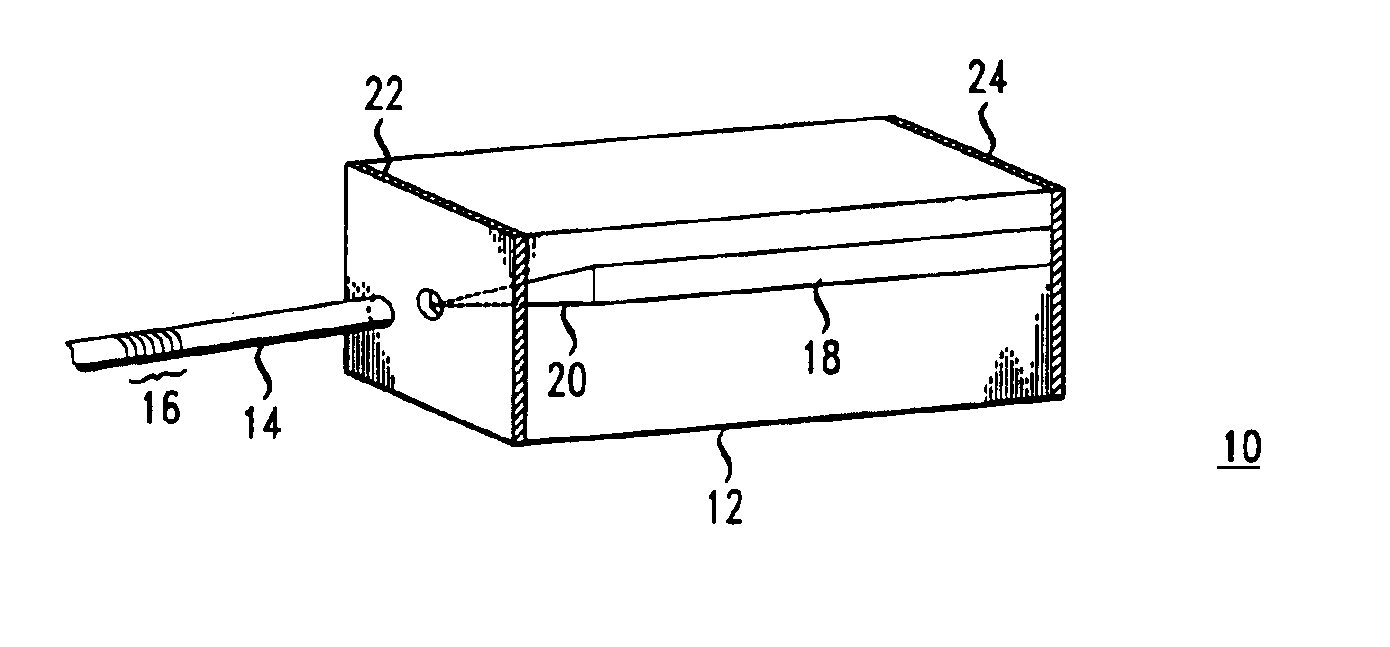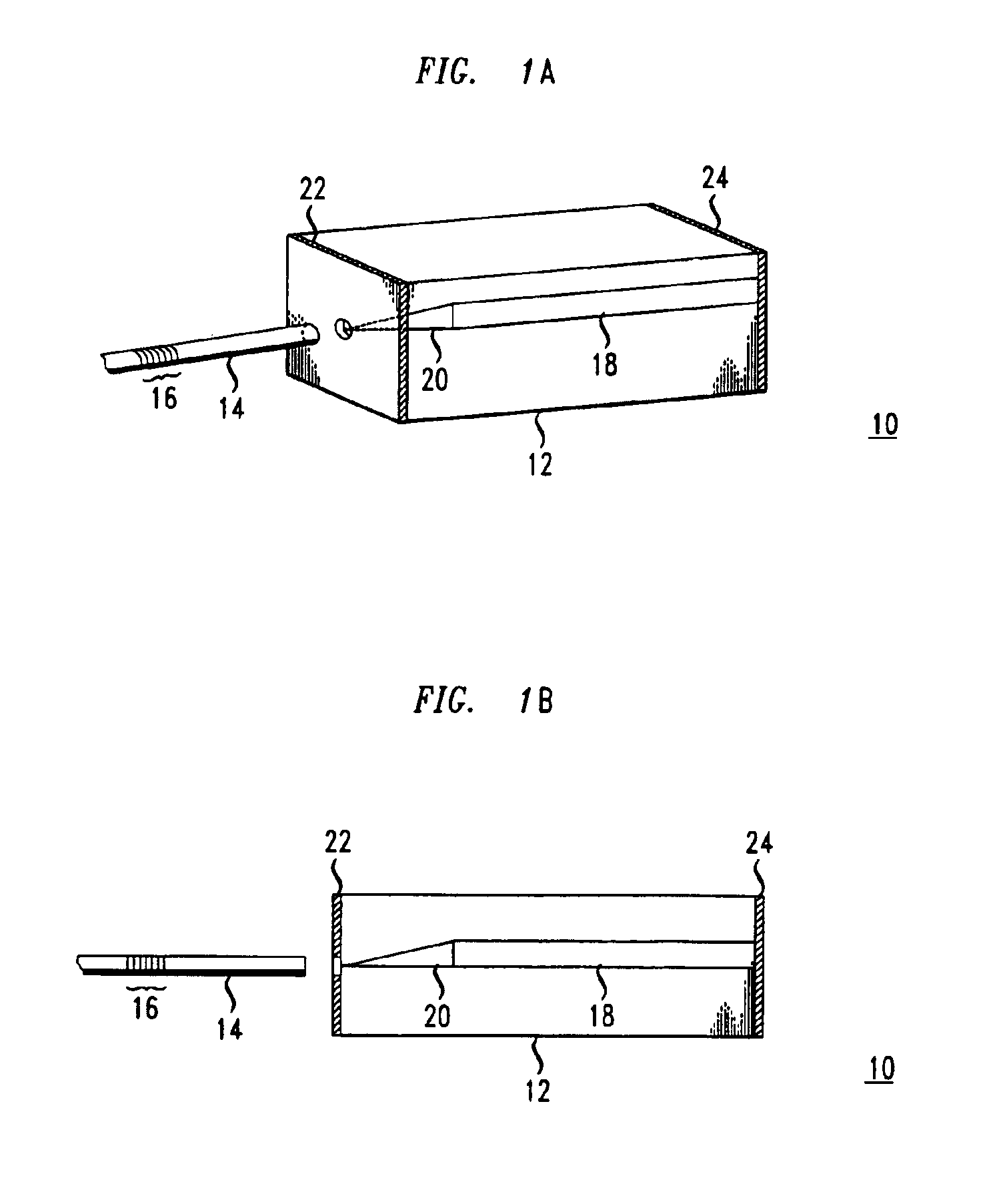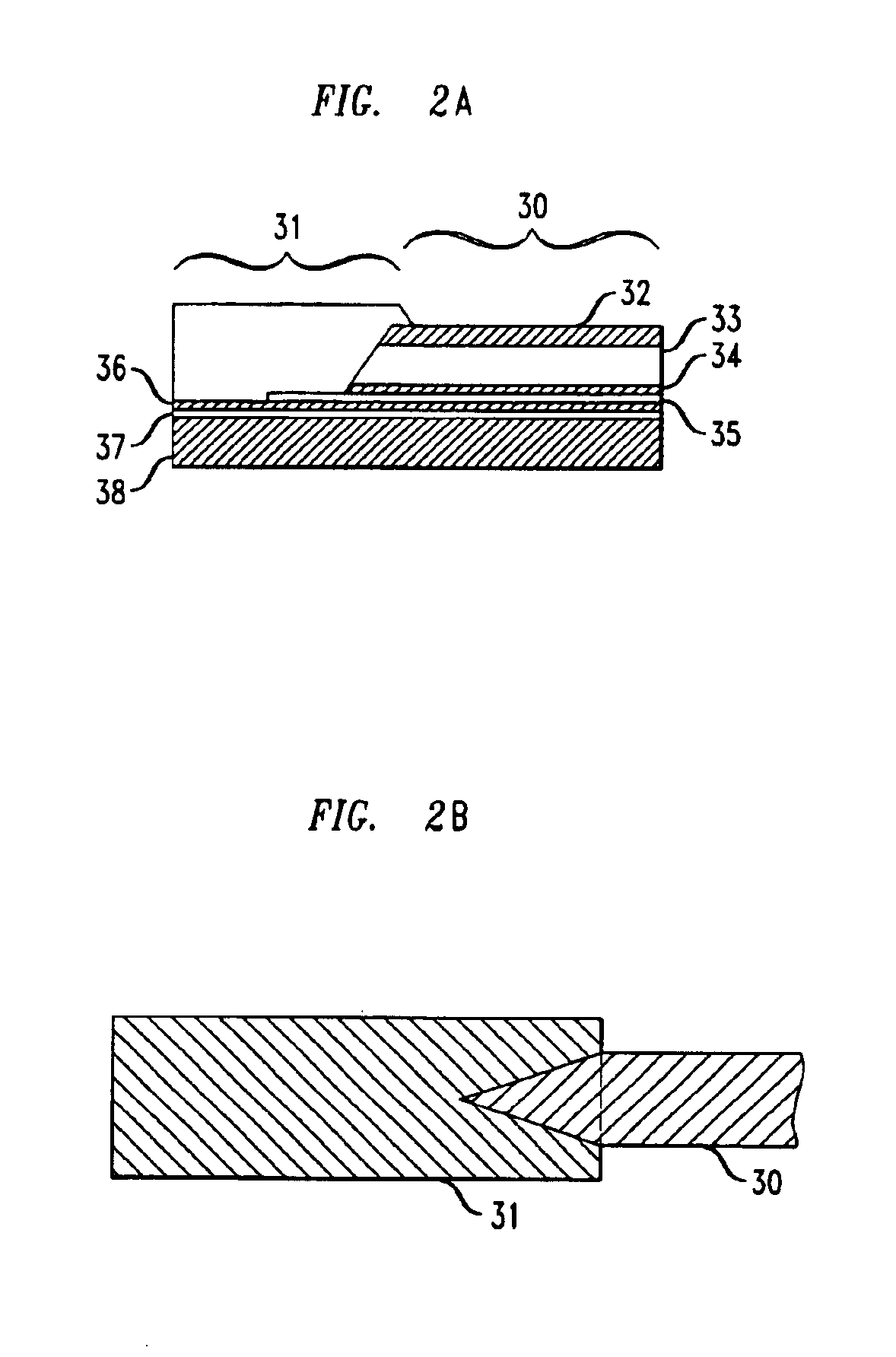System comprising optical semiconductor waveguide device
a waveguide device and semiconductor technology, applied in the field of laser devices, can solve the problems of complex temperature compensating apparatus, difficult coupling process of gain medium to fiber, and etc., to achieve simple and less expensive packaging, the effect of relatively cheap and easy packaging of external cavity lasers
- Summary
- Abstract
- Description
- Claims
- Application Information
AI Technical Summary
Benefits of technology
Problems solved by technology
Method used
Image
Examples
example 1
[0033]A modeling experiment was done for two external cavity lasers—one having a grating with a bandwidth of 23 GHz and a second having a grating with a bandwidth of 90 GHz. Both gratings were nominally centered at 1310 nm. FIG. 3A shows a power vs. current plot of the single mode operation of the first modeled laser. The discontinuity due to a mode hop is apparent, and such a discontinuity would introduce significant bit errors in such devices. FIG. 3B shows the power vs. current plot for the second, multimode device, which has a much smoother curve indicative of a more robust, temperature-intensive device.
example 2
[0034]An external cavity laser was configured for multimode operation by use of a Bragg grating having a FWHM of 90 GHz, again with the Bragg grating centered at a wavelength of 1310 nm. FIG. 4 shows the power vs. current plot for the device at 33° C. The relatively smooth transition from mode to mode, relative to what would be expected for single mode operation, is shown.
[0035]FIG. 5 shows the mode hops as a function of temperature and time. Specifically, as the temperature varied with time, the operative modes shifted while maintaining the multimode operation.
example 3
[0036]Two external cavity lasers were configured for multimode operation, by use of a Bragg grating having a FWHM of 90 GHz. The first had a Bragg grating centered at a wavelength of 1309.3 with a Δλ of 0.325 nm, and the second had a Bragg grating centered at a wavelength of 1316.3 with a Δλ of 0.438 nm. Each device emitted about 3 modes. FIG. 6 shows the output of both devices when the gain medium was modulated at about 2.5 GHz at ambient temperature. The desirable suppression of non-desired Fabry-Perot modes is apparent.
PUM
 Login to View More
Login to View More Abstract
Description
Claims
Application Information
 Login to View More
Login to View More - R&D
- Intellectual Property
- Life Sciences
- Materials
- Tech Scout
- Unparalleled Data Quality
- Higher Quality Content
- 60% Fewer Hallucinations
Browse by: Latest US Patents, China's latest patents, Technical Efficacy Thesaurus, Application Domain, Technology Topic, Popular Technical Reports.
© 2025 PatSnap. All rights reserved.Legal|Privacy policy|Modern Slavery Act Transparency Statement|Sitemap|About US| Contact US: help@patsnap.com



